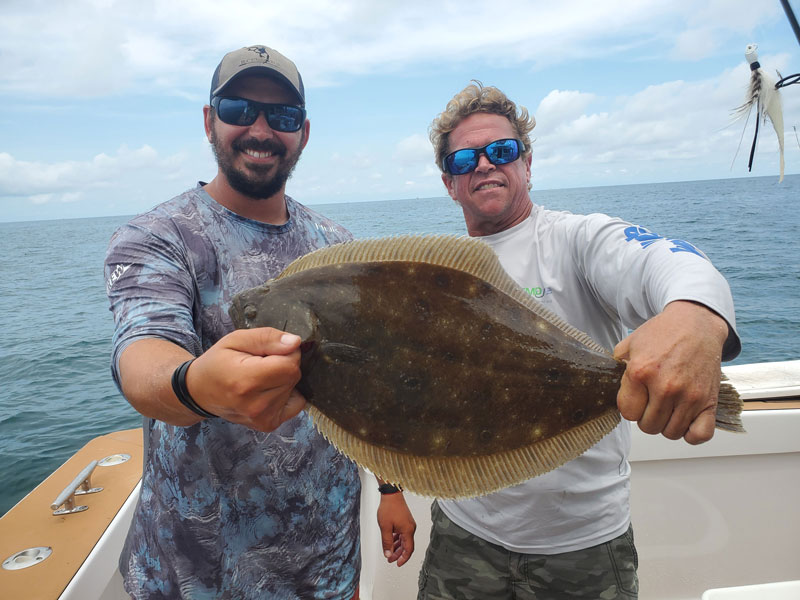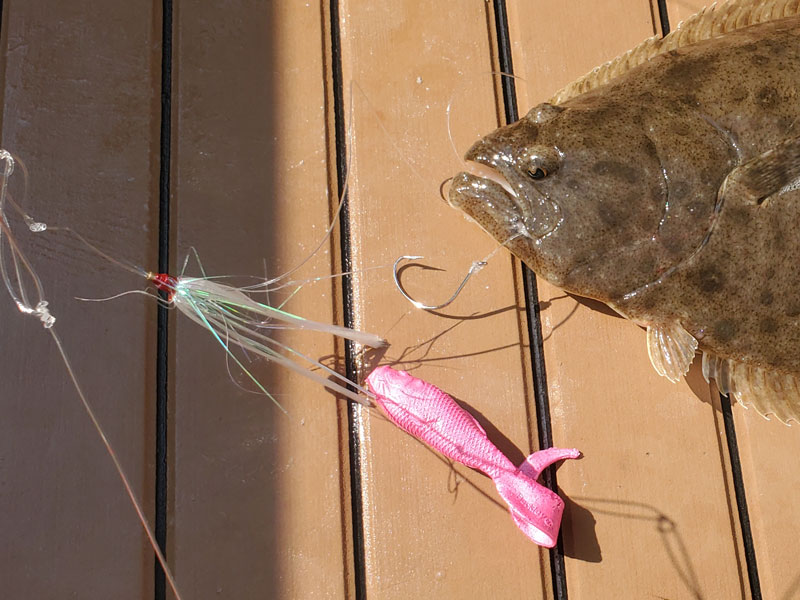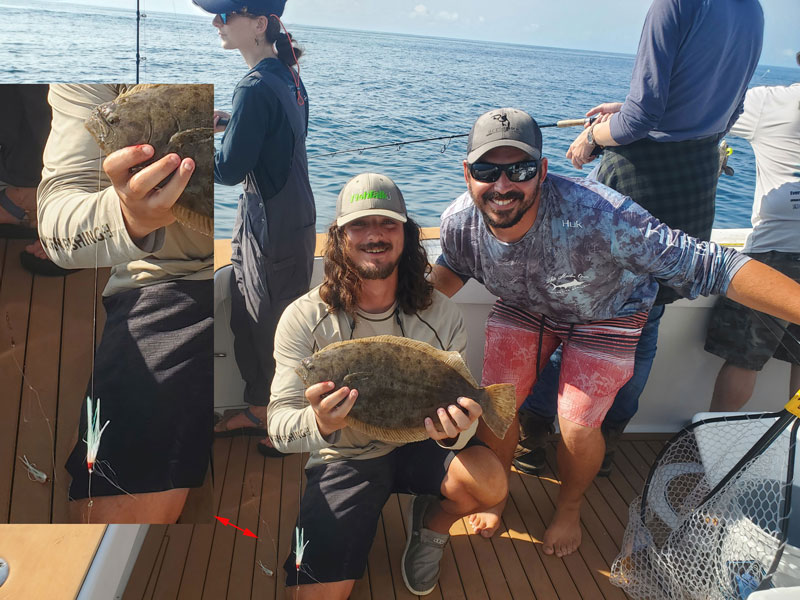There’s no mistaking the “rattle-rattle-THUMP” of a feisty flounder attacking your bait. These oddly shaped bottom dwellers strike with authority and fight with a unique combination of vibrating head-shakes and tail-kicking tugs. Plus, if you’re aching to stuff a fish with crab imperial, bread and fry some fillets, or whip up a batch of fish tacos, few fish can compare with flatties. Ready to make them a target? Once summer hits you can catch them through much of the Chesapeake and all of our coastal bays and inlets, but your best shot at both quality and quantity lies just off the coast from Delaware down through Virginia.

Finding Flounder
There’s no secret to locating these fish: the artificial wreck and reef sites are usually riddled with them. You can get the exact locations for many different options, including GPS coordinates, from the various state agencies. Just Google around and you'll find resources like the DNREC reef guide for Delaware. Same for Maryland, and same for Virginia. Anglers fishing out of Ocean City, MD, can get a major leg up and about a bajillion more sites with coordinates and reef layouts by joining the Ocean City Reef Foundation. A $50 donation gets you a reef network chart book detailing the exact locations of the acres and acres of reefs they’ve established. Chipping in for a good cause and getting one of these is your hands-down best method of finding more flounder (plus black sea bass and tautog) hotspots than you could hope to fish in a lifetime.
Some reefs are, of course, better than others, and which will be hottest can change on a day-to-day basis. That said, as a rule of thumb those closest to the inlets will have the most pressure, and those which are a bit farther afield tend to produce the best catches. Run two to five miles into the ocean and you can catch a few. Run five to 15 miles and the potential increases. Run 15 to 25 and you’re likely to fill the box with fat fish. Sharpies targeting doormats generally cruise no less than 15 miles unless they have a secret location closer to home that doesn’t see much competition.
Upon arrival at a reef site, many anglers will shift into neutral, drop their lines, and immediately begin fishing. This isn’t the best move. Instead, meander around a bit and identify the areas with the highest concentration of reef materials. Then shift to neutral for a minute or two while watching the GPS to determine your drift pattern. With that knowledge in hand you can pull into a position that will send you drifting alongside the most structure for the longest period of time.
The key word in the above paragraph is “alongside.” Flounder tend to congregate next to structure, not overtop of it like sea bass. Drifting across scour holes and flats surrounded by structure will produce more fish, and drifting right over the structure will produce more snags.
Best Bait for Flounder
Traditionalists will drag a Fluke Killer rig baited with squid, live spot or minnow, or a squid/baitfish sandwich. Some sharpies prefer a tandem bucktail rig sweetened with strip baits or Gulp! But the hands-down most productive offering for the widest swath of Mid-Atlantic anglers drift fishing at the wreck and reef sites will prove to be a top-and-bottom Fluke Killer baited with a scented and flavored twister tail like the Fishbites Fight Club or Gulp! Swimming Mullet.

You can find any of these tandem-hook rigs (adorned with bucktail teasers and/or a spinner) at coastal tackle shops. But don’t try to thread the Swimming Mullet on as you would when adding a tail to a jighead. Simply take it and slide the hook right through its nose with the point going in the bottom “jaw” and coming out through the top of its molded head just aft of the fake eye. It may look downright silly to our human eyes — but it works for fooling those flounder.
Color choice generally includes white, chartreuse, and pink, but other colors will have their days and you never know what will work best until you try it. Savvy anglers will leave the dock with at least these three shades in the box and hopefully a couple others to try, make sure a wide assortment is offered up, and adjust the different colors as the fish’s preference of the day becomes clear.

When it comes to inshore fishing in the open ocean flounder are one of our top targets. Few fish are as fun to hook up with, and as tasty on the plate. So this summer make sure you plan to point the bow for the inlet — and get ready for that “rattle-rattle-THUMP!”
Flounder Fishing Tip
When you catch one sea robin after the next don’t be quick to pull up stakes. Sea robins and flounder often feed in the same areas, but they bite best on different tides. Stick it out, and there’s a good chance that as the tide changes the sea robins will mysteriously disappear and flounder will be swinging over the gunwales.